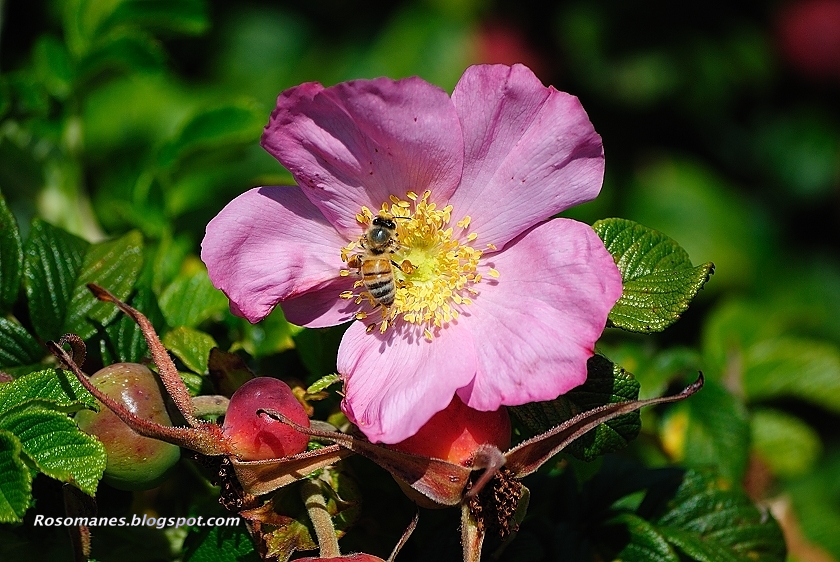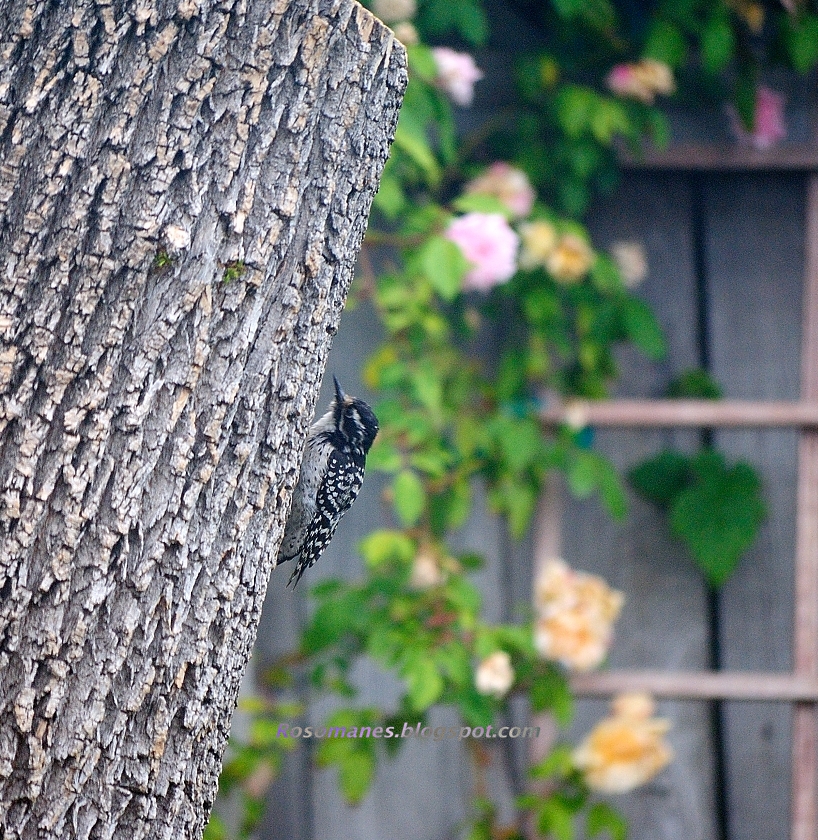Some roses really resent the heat and go dormant, but others don't mind it at all. Granted, the blooms are smaller and less fragrant, but on some plants there are still a lot of them. I try to cut as many as I can get to for the house: on the bush most blooms open in the morning and are gone by afternoon...
This is my first year with campanula primulifolia (below). I am so glad I got it!
Like all my other campanulas, it is summer and fall blooming. It is heat-tolerant too (it faces full west and gets lots of heat from the retaining wall right next to it), and the blooms are plentiful and showy in a nice soft blue.
It provides good vertical interest in the garden, and I hope that as time goes by, it will give me more and more flower spikes.
This richly colored cabbage-like rose is Cynthia Brooke, a hybrid tea. I got it because its blooms resemble those of Soleil d'Or, a beautiful turn-of-the-century Pernetiana rose. Soleil d'Or itself is an ungainly blackspotted sparse plant stingy with blooms, and however gorgeous the blooms are, I passed on such an ugly plant. With Cynthia Brooke I am hoping to get beautiful blooms on a better looking bush, and so far I have been happy about its looks and disease resistance.
I love the intricate patterns inside foxglove flowers. I have struggled to grow them (they fry in the heat but refuse to bloom in the shade), and finally found a place with a bit of filtered light where I can enjoy a few blooms.
There is a wide planting bed all along the backyard fence that I share with a neighbor. I love flowers, and so does he. He grows morning glory intertwined with the potato vine on our shared fence, while I am trying to grow climbing roses and squeeze in as many perennials as I can.. The result is a colorful tangle, messy but exuberant. Sometimes, I shake my head in frustration, but often I quite like it :).
Because of a long growing season, everything gets quite big.
 |
| Classic Woman, a Romantica hybrid tea, easily reaches 7' by summer's end |
The neighbor's vines are quite aggressive in trying to invade my garden and strangle my roses, so they get severely pruned in winter to keep them at least somewhat contained. Lots of work, but pretty, if you don't mind your garden not looking tidy...
This is the time when the garden is at its peak, with most of my plants in bloom. However, I am already beginning to look forward to a wonderful October flush of roses, and fall foliage and first camellia blooms...
 |
| I love penstemons, and so do bees! |


























































